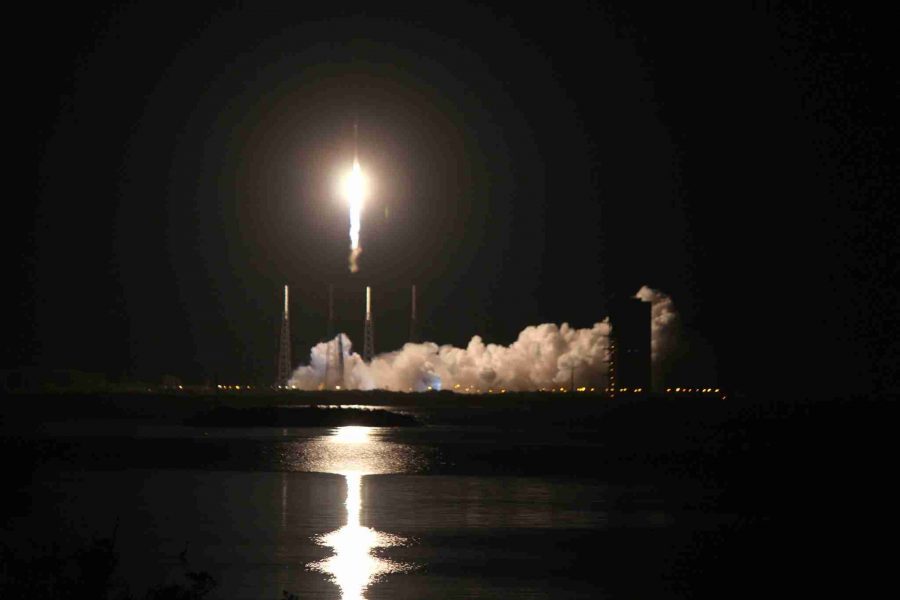NASA launches next-generation relay satellite into orbit
TDRS-L are focused on raising the bar of available communication between Earth and spacecrafts.
January 24, 2014
CAPE CANAVERAL, Fla. — A bright yellow glow illuminated the sky around the Cape Canaveral Air Force Station on Thursday, Jan. 23, as NASA’s Tracking and Data Relay Satellite-L (TDRS-L) began its communication mission.
TDRS-L represents the third generation of satellites focused on raising the bar of available communication between Earth and spacecrafts. Its primary goal is to increase the exchange of information with high bandwidth signals that allow for more reliable contact with vehicles in low-Earth orbit.
“We are striving and working very hard to reduce the cost of communication to NASA and ultimately the taxpayers, while increasing the capability by orders of magnitude,” said Badri Younes, the deputy associate administrator for space communication and navigation for NASA.
One satellite can’t do it alone with a great demand for current and future space missions, so the TDRS system provides a solution to this problem. Nine other TDRS satellites in geosynchronous orbit are currently in operational groups of at least three to ensure nearly uninterrupted signal sharing between the Earth and space. They take in signals from a multitude different satellites including the Hubble Space Telescope and the International Space Station, and beam information via the form of radio waves to three stations on the ground with one in Guam and two in White Sands, New Mexico.
NASA’s Space Network began in 1973 after lesson learned for the Apollo program showed that reliable communication networks were needed to ensure future success in space. The first TDRS launch was in April of 1983 with several launches to follow over the last three decades. This greatly aided the manned space shuttle program which lasted from 1981 till 2011 and helped to ensure mission safety and success rates in orbit.
The overall future goal of this program is to have have new technology fully implemented to construct a robust deep-space network throughout the solar system by 2025.
By then, another goal for this third generation of TDRS spacecraft is to completely shift from radio wave to laser signal processes, which will eventually lead to the total conversion from analog to digital communication.
NASA officials have used the example of live streaming video from Mars in the future compare to the current eight minute delay witnessed today.




